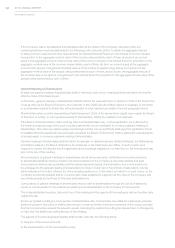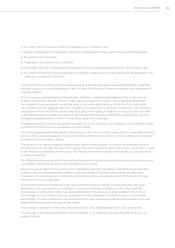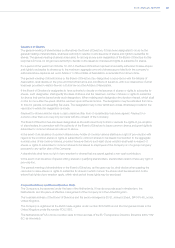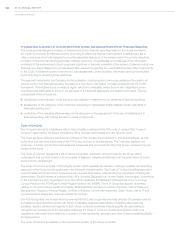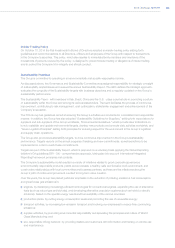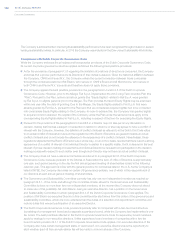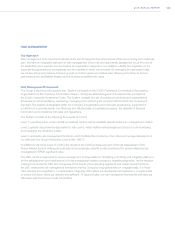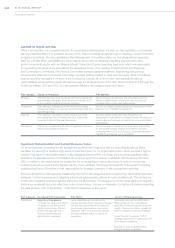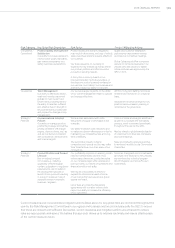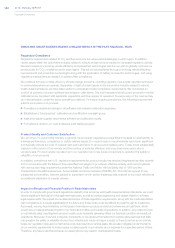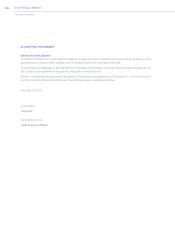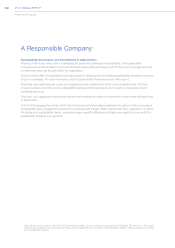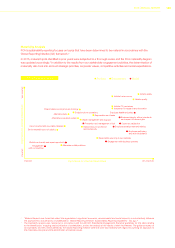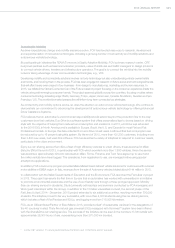Chrysler 2015 Annual Report Download - page 104
Download and view the complete annual report
Please find page 104 of the 2015 Chrysler annual report below. You can navigate through the pages in the report by either clicking on the pages listed below, or by using the keyword search tool below to find specific information within the annual report.
104 2015 | ANNUAL REPORT
RISKS AND UNCERTAINTIES HAVING A MAJOR IMPACT IN THE PAST FINANCIAL YEAR
Regulatory Compliance
Regulatory requirements related to CO2 and fuel economy are unique and challenging in each region. In addition,
recent issues within the automotive industry related to vehicle emissions have resulted in increased regulatory activity.
We are focused on improving vehicle efficiency and powertrain technologies and it is our plan to globally optimize our
product plan for CO2 compliance and in each region. This will be accomplished through prioritizing vehicle efficiency
improvements and powertrain technologies along with the application of battery and electric technologies, and using
regulatory mechanisms as needed, to achieve fleet compliance.
We continue to focus on risks driven by climate change concerns, including regulatory risk and its reputational impact
in communities where we operate. Separately, in light of recent issues in the automotive industry related to vehicle
health-based emissions, we have taken action to extensively review compliance requirements. We conducted an
audit of all current production software and emission calibrations. The audit revealed that all current production vehicle
calibrations are compliant with applicable regulations and they appear to operate in the same way on the road as they
do in the laboratory under the same operating conditions. To ensure ongoing compliance, the following improvement
actions are in place or in process:
Formalized compliance training for all software and emission calibration engineers
Established a “best practice” calibration and certification oversight group
Instituted regular supplier and internal software and calibration audits
Formalized a random, on-road emissions audit testing program
Product Quality and Customer Satisfaction
We, and the U.S. automotive industry in general, have recently experienced a significant increase in recall activity to
address performance, compliance or safety-related issues. Our recent costs to recall vehicles have been significant
and typically include the cost of replacement parts and labor to remove and replace parts. These costs substantially
depend on the nature of the remedy and the number of vehicles affected, and may arise many years after a
vehicle’s sale. Product recalls may also harm our reputation and may cause consumers to question the safety or
reliability of our products.
In addition, compliance with U.S. regulatory requirements for product recalls has received heightened scrutiny recently
and, in connection with the failure in three specified campaigns to provide an effective remedy, and noncompliance
with various reporting requirements under the National Traffic and Motor Vehicle Safety Act of 1966 and the
Transportation Recall Enhancement, Accountability and Documentation (TREAD) Act, FCA US has agreed to pay
substantial civil penalties, become subject to supervision and in certain instances was required to buy back vehicles as
an additional alternative to a repair remedy.
Impact on Results and Financial Position if Risks Materialize
In order to comply with government regulations related to fuel economy and health-based emission standards, we must
devote significant financial and management resources, as well as vehicle engineering and design attention, to these
legal requirements. We expect the number and scope of these regulatory requirements, along with the costs associated
with compliance, to increase significantly in the future and these costs could be difficult to pass through to customers.
As a result, we may face limitations on the types of vehicles we produce and sell and where we can sell them, which
could have a material adverse impact on our financial condition and results of operations. In addition, any costs incurred,
or lost vehicle sales, resulting from product recalls could materially adversely affect our financial condition and results of
operations. Moreover, if we face consumer complaints, or we receive information from vehicle rating services that calls
into question the safety or reliability of one of our vehicles and we do not issue a recall, or if we do not do so on a timely
basis, our reputation may also be harmed and we may lose future vehicle sales. We are also obligated under the terms
of our warranty agreements to make repairs or replace parts in our vehicles at our expense for a specified period of time.
Therefore, any failure rate that exceeds our assumptions may result in unanticipated losses.
Corporate Governance


